Search
Remove Ads
Advertisement
Summary 
Loading AI-generated summary based on World History Encyclopedia articles ...
Search Results
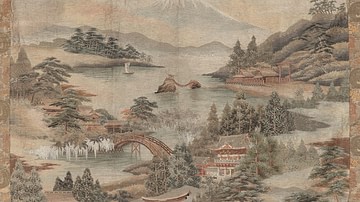
Definition
Meiji Period
The Meiji period refers to the period in Japanese history from 1868 to 1912 during which the Meiji Emperor reigned. Following the overthrow of the Tokugawa shogunate in the Meiji Restoration of 1868, Japan's new leaders embarked on a program...
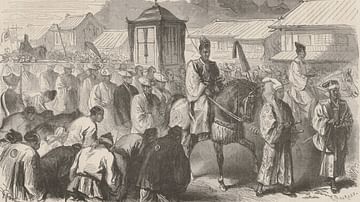
Definition
Meiji Restoration
The Meiji Restoration was a political event that took place in Japan in 1868. In it, the Tokugawa family, a warrior clan that had ruled Japan for more than 260 years, was overthrown by a group of political activists who proclaimed that their...
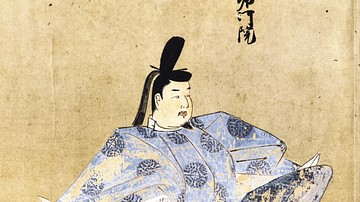
Definition
Emperor of Japan
The emperor of Japan is a position as the head of state which traditionally dates back to the 7th century BCE and the legendary figure of Emperor Jimmu (r. 660-585 BCE). Emperors came to be known as the Tenno or 'heavenly sovereign' in reference...

Image
Emperor Meiji Moving from Kyoto to Tokyo
The palanquin and procession of Emperor Meiji moving from Kyoto to Tokyo through the Tokaido road. Drawing published on the 20 February 1869 issue of Le Monde Illustré, after a croquis by Alfred Roussin, French navy officer in Japan. National...
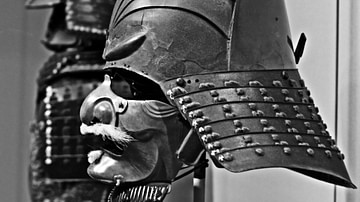
Definition
Medieval Japan
The medieval period of Japan is considered by most historians to stretch from 1185 to 1603 CE. Stand out features of the period include the replacement of the aristocracy by the samurai class as the most powerful social group, the establishment...
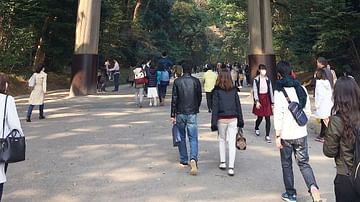
Image
Torii Gate at Meiji Jingu Shrine in Tokyo
This is one of two entrances to the Meiji Jingu Shrine in Tokyo, Japan, which are marked by large wooden torii gates. At Shinto shrines in Japan, the torii demarcates the dividing line between profane and sacred spaces. At the Meiji Jingu...

Definition
Ancient Japan
Ancient Japan has made unique contributions to world culture which include the Shinto religion and its architecture, distinctive art objects such as haniwa figurines, the oldest pottery vessels in the world, the largest wooden buildings anywhere...
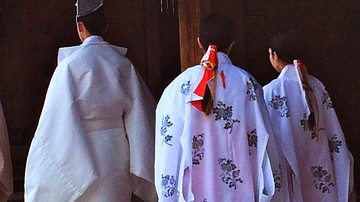
Image
Shinto Priest and Female Shrine Stewards at Meiji Shrine
In this picture, one sees a male Shinto priest accompanied by two female shrine stewards (or "miko" in Japanese) at the Meiji Shrine in Tokyo, Japan as they prepare to oversee a wedding ceremony. While there are some female Shinto priests...
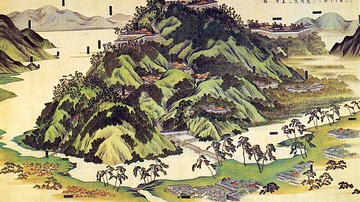
Article
Feudalism in Medieval Japan
Feudalism in medieval Japan (1185-1603) is the relationship between lords and vassals where land ownership and its use were exchanged for military service and loyalty. Although present earlier to some degree, the feudal system in Japan was...
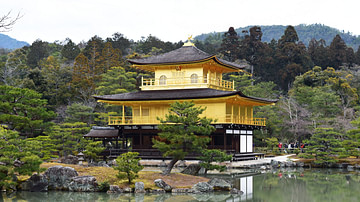
Article
Ancient History Encyclopedia in Japan
The “Ancient Japan” initiative at Ancient History Encyclopedia arose as there is a dearth of open access and digitally curated information concerning early Japanese history available online and in English. East and Southeast Asia are arguably...